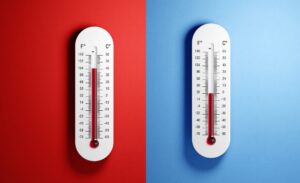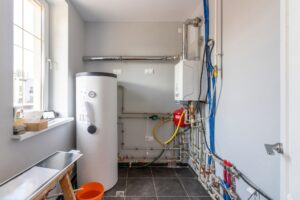Setting the Thermostat the Right Way

Thermostats are a tricky subject, mainly because we have a lot of customers who all have different brands, models, and types of thermostats. There’s not really a good way to talk about the best method for running a thermostat if everyone has a different thermostat matched with a different system.
But the good news is that there are some best practices that work for every type of thermostat and HVAC system. With fuel costs on the rise and inflation causing bills to get worse, even just a slight improvement of home efficiency can go a long way.
This blog post is a guide for customers to help curb their energy use and improve their savings. By shifting the temperature setting just a little bit, or even not touching the knob at all, customers might get more out of their heating systems for less. And if this doesn’t help, then our heater repairs in Westchester might do the trick.
Let’s get right to it!
Setting a Mild Temperature
Nothing is as powerful as the right setting on a thermostat. Too high and the system will work too hard to give subpar results that aren’t worth the extra stress. Too low and the house is uncomfortable and not quite livable. This is what we consider the “Goldilocks” problem, because the thermostat needs to be set to a “just right” temperature.
Normally, this temperature threshold can be anywhere from the mid to upper 60s, since that’s a normal temperature setting that a heating system can handle. Anything higher than this will drastically reduce the efficiency of the system, and anything lower is just not comfortable enough.
Frequent Changes Cause Stress
It might seem crucial to find that perfect temperature setting, but when the thermostat is changed too much, it can lead to wasted fuel or energy. Think about it—every time the thermostat is ticked up or down, the system needs to re-evaluate and turn on to meet the new temperature demand. Especially if this new temperature threshold is a good 10° higher, the system is going to work hard to meet that.
Try to set the temperature one way for longer periods of time so the HVAC unit has more time to adjust and work efficiently.
Upgrade to an Automatic Thermostat
Of course an automatic thermostat (like a smart thermostat model) can go a long way toward making all of this easier. These systems are programmable and can give updates on efficiency rates.
Other Thermostat Solutions
If these tips weren’t enough, here are a few more to help with better temperature control.
- More insulation. Keeping heat inside a home during the winter is a top priority. This can be done with better insulation, especially with doors and windows.
- Zone control. A zone control system can improve the comfort in certain areas of the home that feel too cold.
- Ductless HVAC units. Ductless HVAC systems each have their own thermostat to control, so customers can achieve much more customized temperature settings with this kind of unit.
Contact Yost & Campbell Heating, Cooling & Generators for HVAC repairs or more thermostat suggestions.







